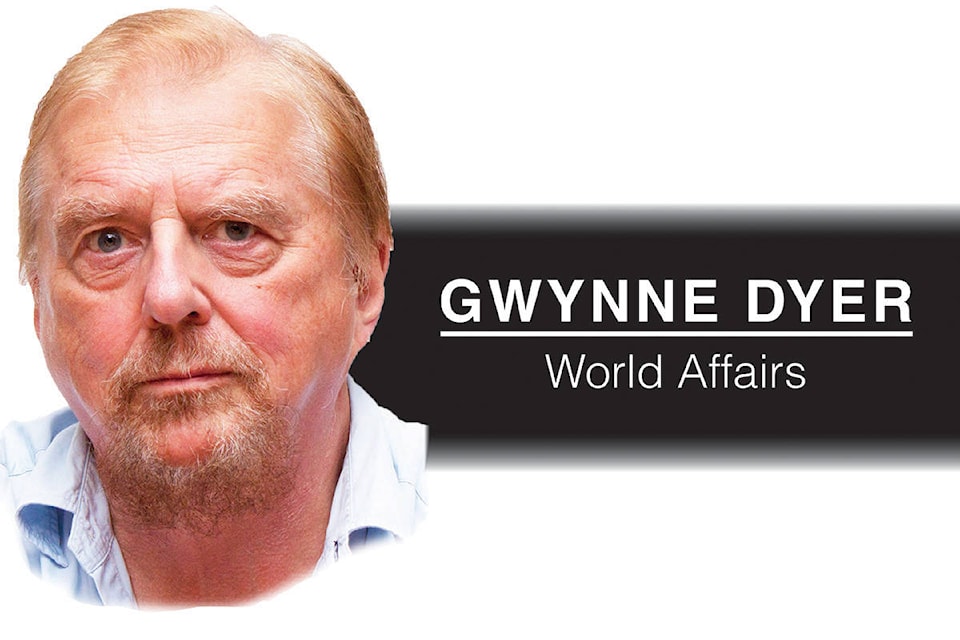Wednesday, the Taoiseach (prime minister) of the Republic of Ireland, Leo Varadkar, and Prime Minister Theresa May of the United Kingdom, both showed up in Belfast in Northern Ireland for the funeral of a young woman named Lyra McKee.
So did the president of the republic, Michael Higgins, and U.K. Opposition Leader Jeremy Corbyn. It’s quite possible that none of them had even heard of her a week ago.
She was a promising young journalist, already well known in the small world of Northern Ireland for her political journalism and her LGBTQ2 activism.
She was killed a week ago by a New IRA terrorist while covering a riot in Derry, the British province’s second city. It was a mistake, of course: the terrorist was probably trying to kill one of the police officers who were standing nearby.
The funeral was held in Belfast’s main Protestant cathedral, St. Anne’s, although McKee had grown up Catholic. Both Catholic and Protestant clergy conducted the funeral service, in a joint rejection of the sectarian violence that is creeping out into the open again in Northern Ireland.
That is why the prime ministers and other high dignitaries were there too – but it may be too late.
McKee described herself as a “ceasefire baby.” She was only eight years old when the Good Friday Agreement was signed in 1998, ending 30 years of The Troubles, a terrorist civil war between Protestant and Catholic extremists that killed more than 3,000 people in a province whose population is less than two million. But the war wasn’t actually about religion.
The Protestants were loyal to Britain (and resentful about losing the absolute dominance they once enjoyed in Northern Ireland). The Catholics were nationalists who looked forward to the day when they would be the majority in Northern Ireland (thanks to a higher birth rate).
They fought each other to a standstill, and in 1998, they signed the Good Friday Agreement, which created a power-sharing government in Northern Ireland and put an end to the killing.
The deal allowed a generation of young people like McKee to grow up in a relatively peaceful place.
It might still be a place with a hopeful future today if the English had not voted to leave the European Union three years ago in the Brexit referendum. (I say English deliberately, because both the Scots and the Northern Irish voted for the United Kingdom to stay in the EU.)
The problem with Brexit is that the Good Friday deal depends on a completely open border between Northern Ireland and the republic. In fact, an invisible border: no police, no checkpoints, little visual evidence that it even exists. That, plus the right to have an Irish passport instead of a British one if they chose, was what persuaded the North’s Catholic nationalists to settle for a draw in the war.
Everybody in Ireland saw the problem with Brexit: if the U.K. withdraws fully from the EU – no customs union, no single market – then the hard border will have to reappear in Ireland. The more extreme nationalists will see that as a betrayal, and the guns will come out again.
Meanwhile, the terrorist attacks are getting started again in Northern Ireland. The dissidents who formed the Real IRA in 2012 are nationalists who never accepted the truce. They have been waiting for an opportunity to reopen the revolutionary liberation war that they imagine was betrayed by the Good Friday Agreement, and Brexit is giving it to them.
There was a car bomb outside the courthouse in Derry in January, and last week the New IRA tried to kill a police officer and shot McKee instead.
As Will Francis, her literary agent, said (quoting William Faulkner): “The past isn’t dead. It’s not even past.”
Gwynne Dyer’s new book is Growing Pains: The Future of Democracy (and Work).
